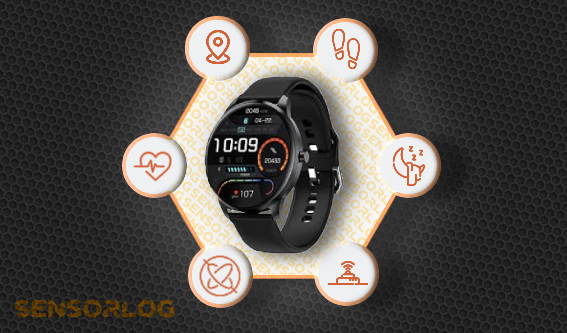This project focuses on developing a comprehensive sleep quality monitoring system using off-the-shelf smartwatches as data collection devices. The system accurately captures and analyzes various sleep parameters such as respiration rate, sleep position, and sleep apnea. To achieve this, I employ signal processing algorithms for denoising, transform, and filtering, along with deep learning models for feature extraction and abnormal respiration classification.
In collaboration with the Penn State Hershey Sleep Research & Treatment Center, i conducted a clinical study to validate the effectiveness and reliability of our system. The study involved close collaboration with hospital technicians to ensure seamless data collection and setup of smartwatches and polysomnography.
To enable practical application and cross-platform compatibility, I developed a sleep monitor app for both Android Wear and Apple Watch platforms. The app collects motion and ultrasonic data, utilizing multi-threading techniques for efficient data processing and implementing Bluetooth connectivity to interface with sensors.
Skills employed in the project include Android SDK, Swift programming, multi-threading, Bluetooth connectivity, and working with IMU sensors and acoustic sensing. Additionally, I leveraged libraries such as pandas, numpy, scipy.signal, TensorFlow, Keras, and scikit-learn for data exploration, feature extraction, deep learning model implementation, and training/evaluation. Below is the detail of each part of the project, highlighting my skills and expertise in various technologies and techniques:
Sleep Monitor App The Sleep Monitor App is a cross-platform solution developed for Android Wear and Apple Watch devices. It allows users to track and analyze sleep quality by collecting motion and ultrasonic data. The app demonstrates my proficiency in Android SDK and Swift programming, multi-threading, Bluetooth connectivity, and working with IMU sensors and acoustic sensing.
Machine Learning based Sleep Respiration Rate Estimation In this part of the project, I focused on accurately estimating users’ respiration rates during sleep. We developed signal processing algorithms and implemented the Short-time Fourier transform to extract the breathing signal from wrist sensor data. By applying a multi-axis fusion approach based on Kalman Filter, we enhanced the prediction accuracy. My expertise in Numpy, Scipy, MatLab, Scikit-learn, Pandas, Matplotlib, and Jupyter/Colab played a crucial role in data manipulation, statistical analysis, and visualization.
Deep Learning based Sleep Apnea Detection The deep learning-based sleep apnea detection component utilizes pandas, numpy, and scipy.signal libraries for data exploration and feature extraction. We successfully identified key characteristics in signal waveforms and developed deep learning models based on DenseNet architecture to achieve exceptional performance in sleep apnea event classification. My skills in Portable Batching System, TensorFlow, CUDA/CuDNN, and model training and evaluation with Matplotlib, scikit-learn, imblearn, and CUDA/CuDNN were instrumental in building and evaluating robust models for detecting abnormal respirations.
The project demonstrates my proficiency in developing practical smart heatlh solutions, conducting clinical studies, implementing signal processing and deep learning algorithms, and utilizing various programming languages and libraries for efficient data analysis and visualization.
